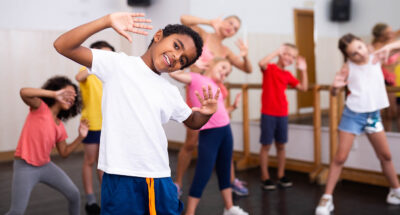
We Are Better (Dancing) Together
Students watch a brief dance sequence or flash mob and then mimic or collectively create a dance sequence, experiencing collective effervescence through movement.

Students watch a brief dance sequence or flash mob and then mimic or collectively create a dance sequence, experiencing collective effervescence through movement.
Students will:
Practice inspired by works of Dr. Keltner and colleagues
In a study of 264 high school students in Brazil, researchers found that both the physical exertion and the synchrony that comes from dancing as a group led to increased endorphins, as well as connectedness and prosociality among the students.
Dancing together is also inherently good for our brains and bodies. In a 2022 review of the physiological and psychological benefits of dance for children and adolescents, researchers found evidence that dance is associated with improvements in physical health, reduction in anxiety and depression, and increases in competence, for both universal and clinical populations.
Many major celebrations—like weddings, coming-of-age celebrations (for example, bat/bar mitzvahs, quinceañeras), or graduations—involve an aspect of collective movement or synchrony, like dancing, processions, or throwing hats in the air together. Dance and movement are time-honored ways that humans have connected with one another, with good reason: It really does seem to bond us.
Thus, making time for movement breaks and incorporating group dance into the school day not only benefits students’ physical and mental well-being, but it can also have profound effects on students’ sense of connection and belonging in the classroom.

Do you want to dive deeper into the science behind our GGIE practices? Enroll in one of our online courses for educators!
Comments